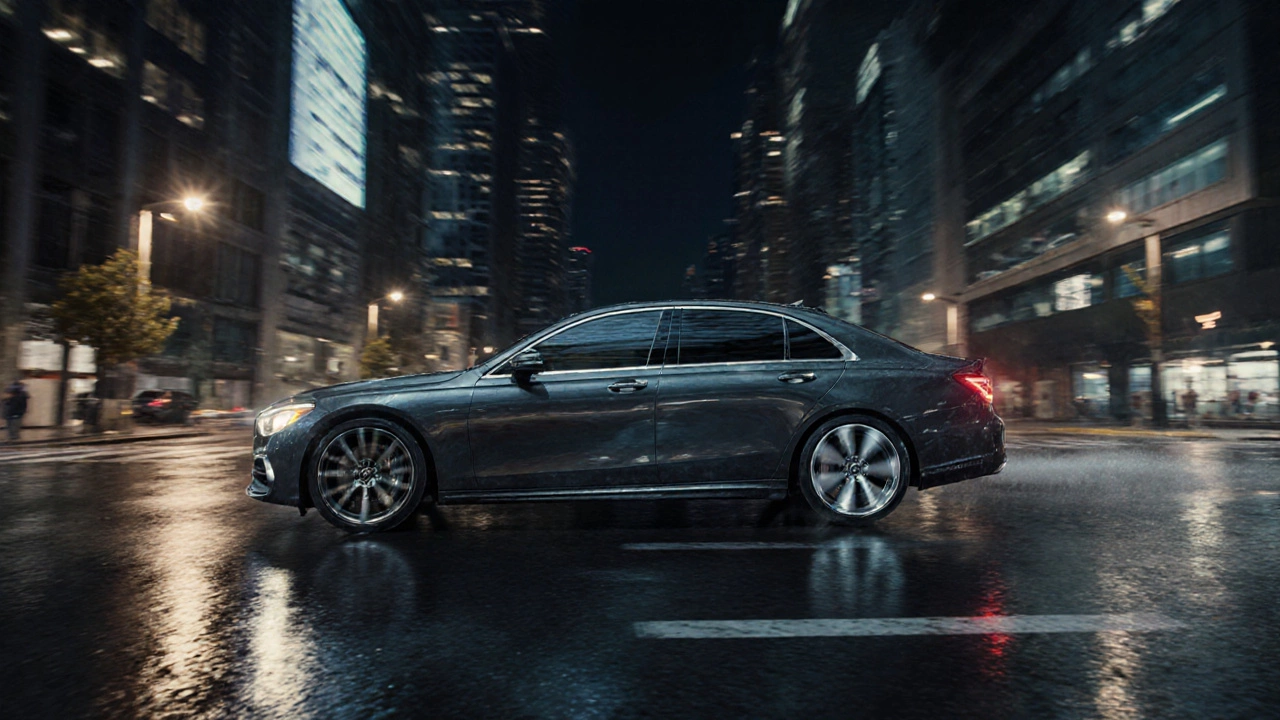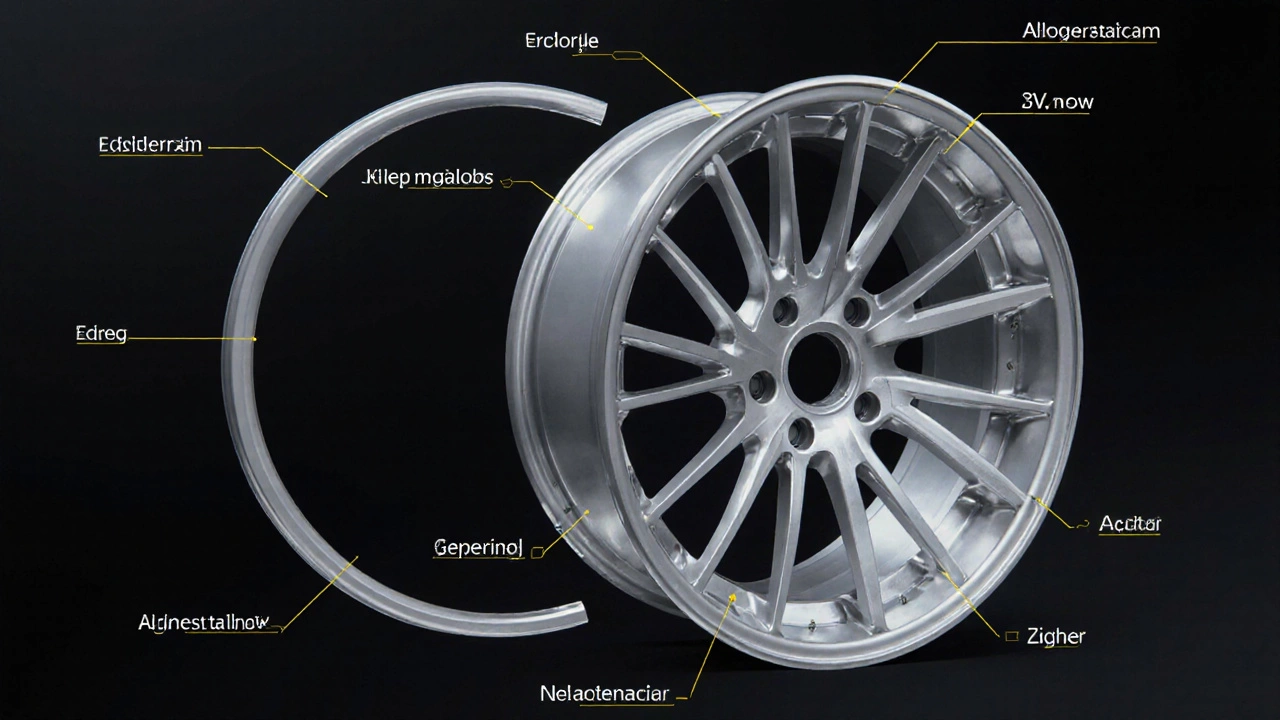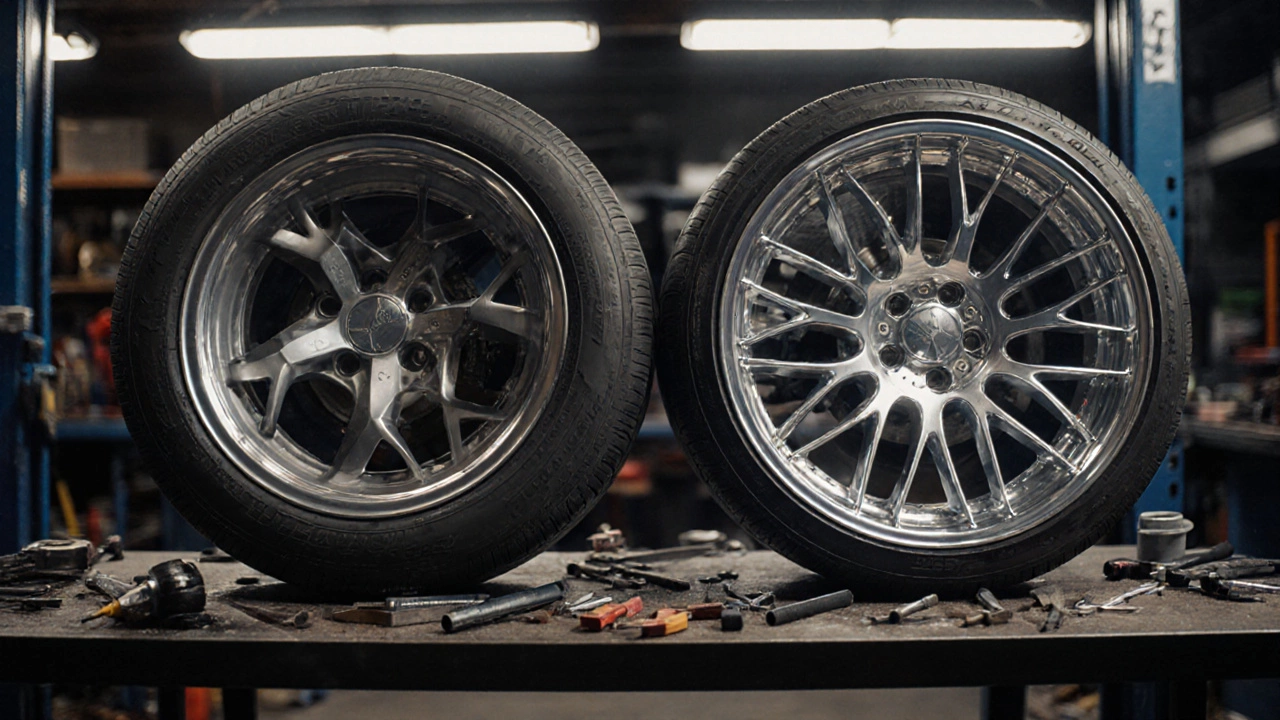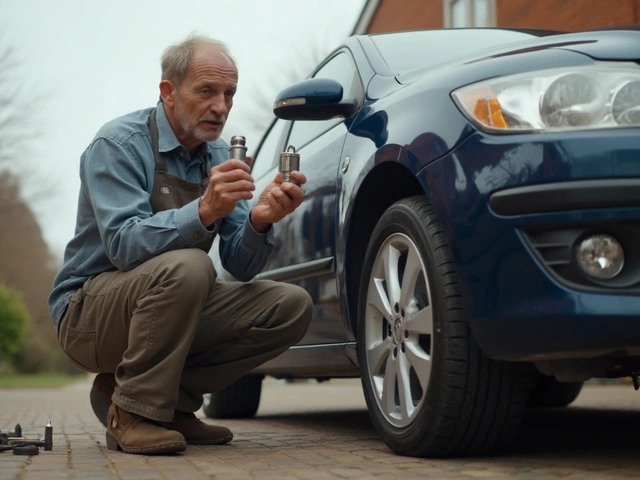Rims vs Alloy Wheels Comparison Tool
What are rims and alloy wheels?
Only the outer edge of the wheel that holds the tire
Think of it like the frame of a picture
Materials:
Steel (common), heavy but durable
Common uses:
- Work trucks
- Economy cars
- Winter wheels (easier to replace)
The entire wheel assembly (rim + spokes + hub)
Not just the outer edge
Materials:
Aluminum alloy (lightweight & strong)
Common uses:
- Performance cars
- Luxury sedans
- Daily drivers for better handling
Performance & Fuel Efficiency
Higher unsprung weight
Makes suspension work harder
Fuel efficiency impact:
Reduced efficiency (up to 5% less)
Handling:
- Less responsive steering
- Longer stopping distance
- More body roll in corners
Reduced unsprung weight
Lighter wheels improve suspension response
Fuel efficiency impact:
Improved efficiency (up to 5% more)
Handling:
- Quicker steering response
- Shorter braking distance
- Improved cornering stability
Cost & Durability
Cost:
$50-$100 (steel)
Lowest cost option
Durability:
Dents easily but can be repaired
Maintenance:
- Minimal corrosion
- Easy to paint
- Good for winter roads
Cost:
$150-$300 (cast)
$500-$1,200 (forged)
Premium pricing
Durability:
Resists dents but can crack
Maintenance:
- Requires regular cleaning
- Prone to corrosion
- More expensive to replace
Which should you choose?
Steel rims are ideal for:
- Harsh winter conditions
- Heavy-duty work vehicles
- Those prioritizing cost over performance
Alloy wheels are ideal for:
- Performance and handling needs
- Improved fuel efficiency
- Enhanced visual appeal
Pro Tip: Many drivers use steel wheels for winter and alloy wheels for summer for the best of both worlds.
People often say "rims" and "alloy wheels" like they’re the same thing. But they’re not. If you’re shopping for new wheels or just trying to understand what your mechanic is talking about, mixing these up can lead to bad choices - or worse, paying extra for something you don’t actually need.
Rims are just one part of a wheel
Let’s start simple. A rims is not the whole wheel. It’s only the outer edge - the part that holds the tire. Think of it like the frame of a picture. The picture is the tire. The frame is the rim. Everything else - the center hub, the spokes, the bolt pattern - that’s not the rim. That’s the rest of the wheel.
Back in the day, most rims were made of steel. They were heavy, durable, and cheap. You’d see them on work trucks, economy cars, and fleet vehicles. Steel rims bend under heavy impact, but they’re easy to fix. A good shop can pound them back into shape. They’re also easy to paint or powder coat if you want to change the look.
Alloy wheels are a type of wheel, not just a rim
An alloy wheel is the entire wheel - rim, spokes, and center hub - made from a mixture of metals. Usually, that’s aluminum with a bit of magnesium. The mix makes the wheel lighter and stronger than plain steel. That’s why you see them on performance cars, luxury sedans, and even modern hatchbacks.
Alloy wheels aren’t just about looks. They reduce unsprung weight, which means your suspension works better. Your tires stay in contact with the road longer, especially over bumps. That improves handling, braking, and even fuel efficiency. A set of alloy wheels can save up to 10% in rolling resistance compared to steel rims.
Not all rims are alloy, and not all alloy wheels are the same
Here’s where things get confusing. You can have a steel wheel with an alloy rim. That’s rare, but it happens. More commonly, you’ll hear someone say "I got new rims," when they really mean "I got new alloy wheels." That’s just slang. The industry and car manufacturers don’t use "rims" to mean the whole wheel. But car owners? They do. Constantly.
Alloy wheels come in different styles - cast, forged, flow-formed. Cast is the most common. It’s made by pouring molten metal into a mold. It’s affordable and looks great. Forged wheels are made under extreme pressure. They’re lighter, stronger, and way more expensive. You’ll find these on sports cars or high-end tuning builds. Flow-formed is a middle ground. It starts as a cast wheel, then gets spun and pressed to tighten the structure. It’s lighter than cast, cheaper than forged, and holds up well on rough roads.

Why does this matter for your car?
If you’re replacing a damaged wheel, knowing the difference saves you money. A steel rim might cost $50 to replace. A cast alloy wheel? $150-$300. Forged? $500-$1,200. If you’re just fixing a curb rash, you might not need a full alloy replacement. Sometimes, a steel wheel with a new tire and a little paint will do just fine.
But if you’re upgrading for performance or style, alloy wheels are the way to go. They’re not just for show. In Melbourne’s wet and uneven roads, lighter wheels help your car respond quicker. They reduce brake fade. They make your suspension last longer. And they look way better than plain steel.
Common myths about alloy wheels
Myth: "Alloy wheels are fragile." Not true. Modern cast alloys handle potholes better than old-school steel. They don’t bend as easily - they crack. And when they crack, they’re usually done for. That’s the trade-off. Steel bends, alloy cracks. You fix one, you replace the other.
Myth: "All alloy wheels are the same weight." Nope. A 17-inch cast alloy might weigh 22 pounds. A 19-inch forged one could be under 18 pounds. That’s a big difference when you’re spinning 80 pounds of rotating mass per corner.
Myth: "Alloy wheels improve speed." They don’t make your car faster in a straight line. But they help you turn better, stop quicker, and corner with more confidence. That’s why race cars use them. Not for horsepower - for control.
How to tell them apart
Look at the back of the wheel. If it’s painted silver or gunmetal and has a smooth, shiny finish with detailed spokes, it’s likely alloy. If it’s dull gray, has a flat surface, and looks like it was stamped out of a sheet, it’s steel.
Check the weight. Lift one. If it feels noticeably lighter than the others, it’s probably alloy. Steel wheels are heavy - like carrying a small dumbbell.
Look for markings. Alloy wheels often have "ALLOY," "FORGED," or the brand name stamped on the back. Steel wheels usually say "STEEL" or have no marking at all.

When to choose steel vs. alloy
- Choose steel wheels if you drive on rough roads, haul heavy loads, or want to save money. They’re great for winter use - you can throw them on and forget about them.
- Choose alloy wheels if you care about handling, aesthetics, or fuel efficiency. They’re ideal for daily drivers, performance builds, or if you just want your car to look sharper.
Some people swap between the two. They keep a set of steel wheels with winter tires for snow and ice, and use alloys all year round. That’s a smart move if you live somewhere with harsh weather.
What to watch out for
Alloy wheels are more prone to corrosion from road salt and brake dust. If you don’t clean them regularly, they can pit or turn chalky. Use a non-acidic wheel cleaner. Avoid harsh brushes. A soft microfiber cloth and a good rinse are enough.
Also, make sure your lug nuts are torqued properly. Over-tightening can crack the center bore of an alloy wheel. Under-tightening? That’s how wheels come off. Always use a torque wrench. Your owner’s manual will tell you the right setting.
Bottom line
Rims are a part of a wheel. Alloy wheels are a type of full wheel. They’re not interchangeable terms. If someone says "I need new rims," ask them if they mean the whole wheel or just the outer edge. That’ll save you time, money, and confusion.
For most drivers today, alloy wheels are the default. They’re lighter, better-performing, and more attractive. But steel rims still have their place - especially when you need toughness over looks. Know the difference, and you’ll make smarter choices when it’s time to replace, upgrade, or just fix a bent wheel.
Are rims and alloy wheels the same thing?
No. Rims are only the outer edge of the wheel that holds the tire. Alloy wheels are the entire wheel - including the center hub and spokes - made from a lightweight metal blend, usually aluminum and magnesium. People often use "rims" to mean alloy wheels, but technically, that’s incorrect.
Why are alloy wheels more expensive than steel rims?
Alloy wheels cost more because they’re made from higher-grade materials and require more complex manufacturing. Cast alloy wheels are poured into molds, while forged ones are pressed under extreme heat and pressure - both processes are more expensive than stamping steel. They’re also lighter, stronger, and better for performance, which adds to their value.
Do alloy wheels improve fuel efficiency?
Yes. Because alloy wheels are lighter than steel rims, they reduce unsprung weight. This means your engine doesn’t have to work as hard to spin the wheels, leading to better fuel economy. On average, switching from steel to alloy can improve efficiency by 2-5%, depending on wheel size and vehicle weight.
Can you repair a cracked alloy wheel?
Sometimes, but it’s risky. Minor cracks can be welded by specialists, but the wheel’s structural integrity is compromised. Most mechanics recommend replacement instead. A repaired alloy wheel may fail under stress, especially at high speeds or during hard cornering. Safety should always come before cost savings.
Are steel rims better for winter driving?
Yes, for practical reasons. Steel rims are cheaper to replace if damaged by salt, potholes, or curbs. They’re also easier to repair if bent. Many drivers keep a separate set of steel wheels with winter tires to protect their alloy wheels from corrosion and damage during snowy months.
How do I know if my wheels are alloy or steel?
Look at the finish - alloy wheels are usually shiny, with detailed spokes and a smooth surface. Steel wheels are dull gray, often with a flat or stamped look. Lift one: alloys are noticeably lighter. Check the back for markings like "ALLOY" or "FORGED." Steel wheels often have no markings or just say "STEEL."




